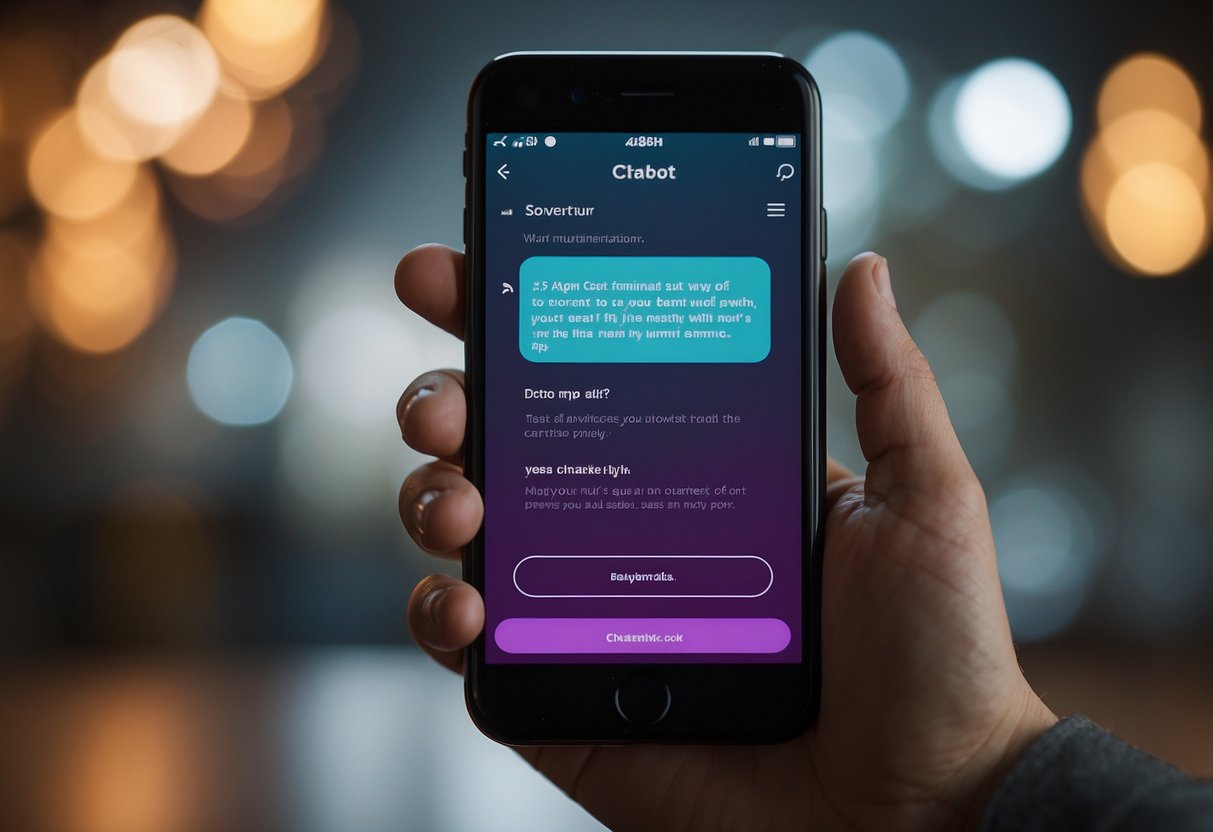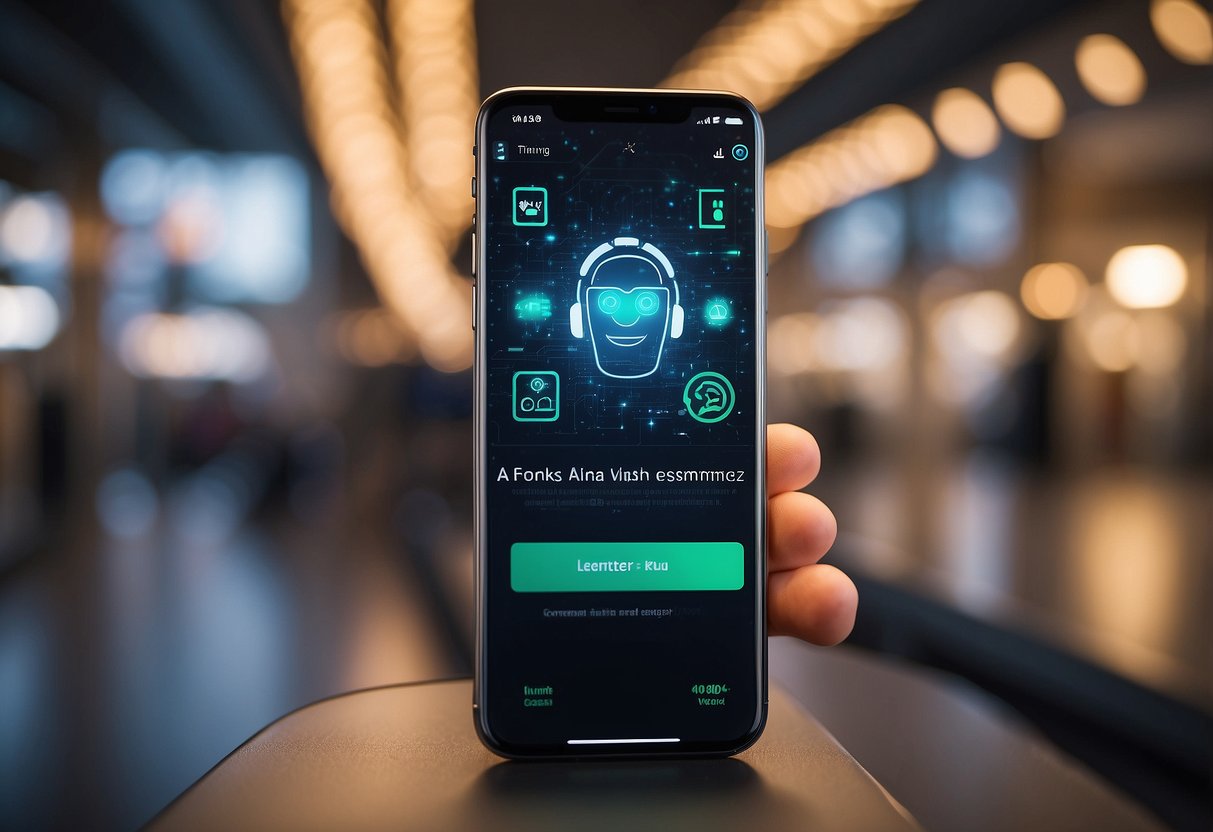In the ever-evolving world of e-commerce, staying ahead of the curve can make all the difference.
Chat GPT is revolutionizing how you interact with customers, boost your sales, and understand your market.
Imagine having a virtual assistant that is not only intelligent but also constantly learning from each interaction.

Isn’t it frustrating when customers abandon their shopping carts because they couldn’t find an answer quickly enough?
Chat GPT can handle customer queries in real-time, providing instant support and enhancing the shopping experience. This means fewer abandoned carts and more completed transactions, ultimately increasing your revenue.
Beyond customer service, Chat GPT can be a game-changer for your sales and marketing efforts.
By analyzing customer data and conversations, it offers insights that can help you tailor your marketing strategies and create personalized shopping experiences.
This technology isn’t just a trend; it’s a tool to transform your e-commerce operations and future-proof your business.
Key Takeaways
- Chat GPT improves customer interaction and support.
- It provides valuable insights for sales and marketing.
- It enhances the efficiency of e-commerce operations.
Understanding Chat GPT for E-Commerce
With the growing influence of artificial intelligence in retail, e-commerce businesses are leveraging AI technologies like Chat GPT to enhance customer experiences and streamline operations.
The Emergence of AI in E-Commerce
AI has revolutionized how e-commerce operates, from automating customer service to predicting shopping trends.
Major retailers are using AI to personalize recommendations and optimize supply chains.
Did you know that by 2023, the global AI in the retail market was valued at $4.84 billion? This rise is due to advancements in machine learning and natural language processing.
AI tools can predict consumer behavior, manage inventory, and even handle content creation.
For example, personalized shopping experiences have increased customer engagement and sales for companies like Amazon.
By incorporating AI, businesses can stay competitive in a rapidly evolving market.
Defining Chat GPT and Its Capabilities
Chat GPT, developed by OpenAI, is a model trained to understand and generate human-like text.
It’s based on the GPT-4 architecture, utilizing deep learning and natural language processing to interact with users.
E-commerce businesses use Chat GPT for various tasks such as customer support, handling FAQs, and even guiding users through the purchasing process.
Imagine having a virtual assistant that can respond to inquiries in real-time, significantly improving the shopping experience.
Additionally, Chat GPT can automate responses, saving time and resources while maintaining high-quality customer interactions.
By integrating Chat GPT, you’re not just adding a customer service tool; you’re enhancing the overall user experience through intelligent and efficient communication.
Enhancing Customer Interactions with Chatbots

Chatbots are revolutionizing how customers interact with ecommerce platforms, offering immediate responses and personalized assistance. Let’s dive into three crucial areas where chatbots make a significant impact.
Improving Customer Service and Support
Chatbots can handle a wide range of customer queries instantly, no matter the time of day.
This means you don’t have to wait around for a human agent. Instead, you get rapid assistance, whether it’s tracking an order, handling returns, or answering product-related questions.
Some tasks that chatbots excel at include:
- Order tracking
- Product inquiries
- Return policies
According to a study by IBM, 52% of customers now expect a response within an hour. Chatbots are perfectly suited to meet this expectation, ensuring your customer service is always on point and reducing wait times.
Enabling Smooth Conversations and Queries
Chatbots are designed to provide natural and seamless conversations.
When you ask a question, you’ll get a direct and relevant answer without the awkward pauses you might experience with a human. This makes the interaction feel more natural and friendly.
With the ability to learn from previous interactions, chatbots can offer personalized recommendations or remember past problems, ensuring a smoother customer experience.
Popular platforms like Facebook Messenger and Slack already use advanced chatbot functionalities to enable smooth user interactions.
Integrating Chatbots Across Multiple Platforms
It’s essential that your chatbot can engage with customers on various platforms.
Whether your customer is on your website, using a mobile app, or browsing social media like Facebook, integrating your chatbot across these platforms ensures a consistent service.
Here’s where chatbots can make a difference:
- Website chat windows
- Mobile app support
- Social media interactions
By being present where your customers are, chatbots create multiple touchpoints that enhance the customer experience. Plus, they gather valuable insights across different contact points, helping you refine your services.
Leveraging Chat GPT for Sales and Marketing

Using Chat GPT can transform your sales and marketing strategies. It can create compelling product descriptions, offer personalized product recommendations, and enhance your email marketing and social media content.
Creating Compelling Product Descriptions
You know that first impressions matter in eCommerce.
Chat GPT can help by crafting compelling and detailed product descriptions. These descriptions highlight the key features and benefits of your products, grabbing the attention of potential customers.
Quality descriptions lead to higher engagement and can improve conversion rates.
With a well-written product description, you can answer consumer questions and reduce purchase hesitations. Plus, you can maintain a consistent brand voice across all your listings.
Product Recommendations and Personalization
Imagine this: you walk into a store, and the salesperson knows exactly what you like.
That’s what personalized product recommendations can achieve online.
Chat GPT analyzes customer behavior and purchase history to suggest products tailored to individual preferences.
Personalized recommendations can lead to increased sales and customer satisfaction.
By providing a customized shopping experience, you encourage repeat purchases and foster brand loyalty. It’s like having a personal shopping assistant for each of your customers.
Chatbots in Email Marketing and Social Media Content
Your email marketing and social media campaigns can become more engaging with the help of Chat GPT.
It can create tailored and interactive email content, making your messages more relevant to each subscriber.
Using chatbots powered by Chat GPT in social media helps in real-time responses and customer engagement.
Automated yet personalized responses to comments and messages can keep your followers engaged and provide prompt customer service.
This approach not only saves time but also ensures that your brand is always in touch with its audience. Effective use of Chat GPT in marketing communications can drive more traffic and increase your conversion rates.
Understanding Your Customers with Chat GPT

Chat GPT offers a powerful way to gain insights into your customers’ behaviors, preferences, and demographics.
By leveraging this technology, you can gather valuable customer data, analyze purchase history, and segment your target audience more effectively.
Gathering and Utilizing Customer Data
Understanding your customers starts with collecting relevant data.
With Chat GPT, you can gather information through conversational interactions, surveys, and feedback forms. This data includes purchase history, preferences, and demographic details, which can be stored and analyzed.
Use data analytics tools to sift through this information efficiently.
For instance, you might use tables to organize data points, such as:
| Metric | Value |
|---|---|
| Age Range | 25-34 |
| Preferred Products | Electronics, Fashion |
| Purchase Frequency | Once a month |
Regular updates to your customer database ensure you stay informed about changing trends and preferences.
Analyzing Customer Preferences and Purchase History
Chat GPT helps you analyze customer preferences by identifying patterns in conversational data.
For example, repeated mentions of specific products or features can signal popular items.
Analyzing purchase history reveals trends in buying behavior.
You can use this analysis to tailor your marketing strategies.
Consider a scenario where data shows high demand for a product during the holiday season. Target those preferences with timely promotions.
Using data visualization tools like charts and graphs, you can easily track and interpret these trends, making your marketing efforts more strategic.
Optimizing E-Commerce Operations with AI

AI can significantly streamline e-commerce operations such as managing inventory, handling returns, and analyzing data for business growth.
You can leverage AI technology to automate and improve these critical functions for efficiency and better decision-making.
Inventory and Supplier Management
Managing inventory can be a headache, right?
AI helps you streamline this process by predicting stock levels based on sales trends. Smart algorithms can reorder stock automatically, avoiding shortages or overstock.
Imagine your suppliers being automatically notified when inventory runs low. AI can handle that.
You save time, reduce costs, and maintain a smooth workflow. Plus, you can track supplier performance with real-time data analysis. No more guessing, just facts.
Handling Returns and Post-Purchase Support
The return process can be a nightmare for any business. With AI, handling returns becomes a breeze. AI can automatically process return requests, classify them, and even suggest solutions. This reduces the workload on your support team and speeds up the process for the customer.
Post-purchase support gets a boost too. AI chatbots can offer 24/7 assistance, answering common customer queries instantly. This ensures that your customers feel supported and increases their satisfaction. Happy customers are repeat customers!
Data Analysis for Business Growth
Who loves crunching numbers? AI does, and it’s incredibly good at it. You can leverage AI to perform deep data analysis, identifying trends, customer preferences, and growth opportunities. This data-driven approach helps you make informed business decisions, driving your e-commerce store’s success.
AI tools analyze data more quickly and accurately than any human could. You get actionable insights in real time. Whether it’s sales patterns or customer behavior, AI helps you stay ahead of the curve.
Maximizing Content Creation with Chat GPT

Efficient content creation in eCommerce can be boosted with Chat GPT. By generating engaging content ideas, producing polished blog posts and ad copy, and optimizing SEO for titles and product details, you can streamline your workflow and enhance the quality of your content.
Generating Content Ideas with AI
Are you ever stuck on what to write? Chat GPT can help you brainstorm fresh and relevant content ideas tailored to your niche. Just by inputting a few keywords related to your business, you can receive various content suggestions.
Imagine needing blog post topics about your new product line. Input keywords like “eco-friendly kitchen gadgets,” and you’ll get ideas like “Top 10 Eco-Friendly Kitchen Gadgets” or “Why Sustainability in the Kitchen Matters.” This saves time and ensures content is aligned with current trends.
Writing and Proofreading Blog Posts and Ad Copy
Creating error-free content is crucial for maintaining professionalism. Chat GPT is excellent at drafting well-structured blog posts and persuasive ad copy. You can generate a base draft and quickly refine it.
For example, you need an ad copy for a new product launch. Input your main points, and the AI can help craft appealing text: “Introducing the ultimate eco-friendly kitchen gadget – efficient, stylish, and sustainable. Get yours today!“
Additionally, use Chat GPT for proofreading. It can spot grammatical errors, awkward phrasing, and improve readability, ensuring your content is polished and professional.
Creating SEO-Optimized Titles and Product Details
SEO is essential for visibility. Chat GPT can assist in crafting SEO-optimized titles and product details that attract search engine algorithms.
Suppose you are listing a new product. The AI can suggest titles like “Eco-Friendly Bamboo Cutting Board – Durable and Sustainable.” For product descriptions, it can help articulate key benefits concisely: “Our bamboo cutting board is not only durable but also eco-friendly, ensuring a safe and sustainable option for your kitchen.“
Addressing Chat GPT Integration Challenges

Integrating Chat GPT into an eCommerce platform can be highly beneficial, but it isn’t without challenges. Understanding the competitive landscape, ensuring security and privacy, and avoiding common mistakes will smooth the path for a successful implementation.
Navigating the Competitive Landscape
The eCommerce world is crowded with competitors implementing Chat GPT to enhance customer interactions. You need to identify unique selling points that set your AI integration apart. Consider features like personalized recommendations, 24/7 customer support, and loyalty program management.
Investing in regular updates and optimization keeps your AI ahead. Regularly monitor competitor strategies and adapt accordingly. This proactive approach ensures you maintain a competitive edge while meeting customer expectations efficiently.
Ensuring Security and Privacy with AI
Security and privacy are paramount when integrating AI into your eCommerce platform. You must ensure compliance with data protection regulations like GDPR and CCPA. Encrypt customer data to protect against breaches and have a clear privacy policy in place.
Implement multi-factor authentication (MFA) and regular security audits. Keeping customers’ trust is crucial, and any lapse in security can lead to lost loyalty. Being transparent about how you handle their data builds confidence and promotes a secure shopping experience.
Common Mistakes and How to Avoid Them
One common mistake is underestimating the complexity of AI integration. Plan thoroughly and allocate sufficient resources for development and testing. Skipping these steps can lead to poor performance and user dissatisfaction.
Another pitfall is not training your AI model sufficiently. Use diverse datasets to train the AI, reflecting your customer base. Over-reliance on generic data can result in inaccuracies that frustrate users.
Finally, failure to continuously optimize the Chat GPT system can be detrimental. Regular updates and performance checks are essential. Listen to user feedback and adapt the AI to address recurring issues and improve the overall experience.
Exploring Advanced Features and Customization

Maximizing the potential of Chat GPT for ecommerce involves leveraging advanced features such as NLP for user interactions and developing custom chat solutions tailored to unique business needs. By focusing on these areas, you can significantly enhance customer satisfaction and streamline your online services.
Harnessing NLP for Enhanced User Interactions
Natural Language Processing (NLP) allows chatbots to understand and process human language more naturally. Imagine your customers getting responses that sound almost human! NLP can help in analyzing user reviews, which enables you to adjust your offerings based on customer feedback.
Another exciting feature? Sentiment analysis. This helps determine if a customer is happy or frustrated, allowing you to tweak responses in real-time. Text classification is another NLP feature that categorizes customer queries, making it easier for your system to route questions to the right department.
- Key Features:
- Sentiment Analysis: Understand customer emotions.
- Text Classification: Efficient query management.
- Entity Recognition: Extract important details from messages.
Developing Custom Chat Solutions for Unique Needs
Sometimes, off-the-shelf solutions just don’t cut it. You might need customizable chatbots that meet specific business requirements. Tailoring these chat solutions can help address unique customer concerns, streamline processes, and offer personalized services.
For example, a fashion retailer might need a bot that helps customers pick outfits based on user reviews and past preferences. Or a travel agency may require a bot to provide itinerary recommendations based on customer queries.
Developing these solutions involves:
- Custom Scripting: Create dialog flows that match your business voice.
- API Integration: Connect your chatbots to other systems, like CRM or inventory.
- User Testing: Run trials to ensure the chatbot meets user expectations.
Future Prospects of Chat GPT in E-Commerce

The future of Chat GPT in e-commerce is promising, with advances in AI development and a shift in customer expectations transforming the shopping experience. Businesses are finding innovative applications, from personalized recommendations to enhanced customer service.
Innovations in AI Development and E-Commerce Applications
AI development continues to evolve, leading to more sophisticated e-commerce applications. Imagine chatbots that not only answer queries but provide tailored product recommendations based on browsing history.
Retailers like Amazon and Shopify leverage AI to automate customer service, streamline operations, and create interactive product descriptions. This is not science fiction; these enhancements can lead to increased sales and customer satisfaction.
Future developments may focus on real-time language translation, enabling businesses to cater to a global audience seamlessly. This could break down language barriers and provide personalized experiences to diverse customers. Moreover, integrating AI with augmented reality can allow customers to visualize products in their environment, making online shopping as tangible as in-store experiences.
Evolving Customer Expectations and Experiences
Customers now expect more than just transactions. They seek engaging and personalized experiences.
With Chat GPT, you can fulfill these expectations. You can offer real-time assistance, resolve issues, and make personalized shopping suggestions.
Shoppers appreciate when a chatbot remembers their preferences and past purchases. It’s like having a personal shopping assistant available 24/7.
For example, Nordstrom has seen success in using chatbots to answer customer inquiries quickly. This has led to higher customer satisfaction rates.
As e-commerce expands, the need for instant and accurate responses grows. Future customer experiences may include virtual personal shoppers.
These shoppers can guide you through your purchasing journey. They can make recommendations, answer questions, and even predict your needs before you realize them.
This level of service not only meets but exceeds customer expectations. It fosters loyalty and repeat business.
Interactive and personalized experiences driven by AI will likely become the standard. They will ensure customers feel valued and engaged every step of the way.




